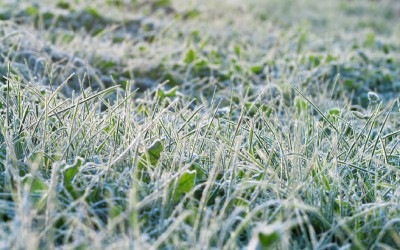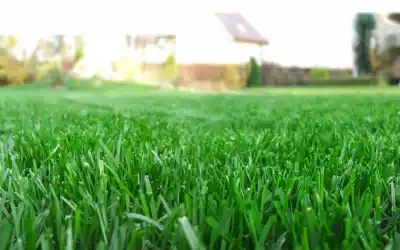What to Know About Lawn Frost in Florida
Florida is known for having mild winters that draw so-called ‘snowbirds’ from all over the country. But what people who live elsewhere may not realize is that much of Florida gets at least some cold weather in the winter. Sure, it’s not what you’d deal with in the Midwest. It’s still enough to make you reach for your coat or the dial of your thermostat, and it can have major effects on your lawn.
Lawn frost doesn’t sound like a big deal. It gets cold overnight, your lawn gets some frost on it. It will melt later in the day. What’s the big deal, right? If handled improperly, frost can seriously damage your landscaping. We’ll learn how but first, what is frost?
How Does Frost Form?
Frost typically occurs overnight when the temperature of the air near the ground drops below 32 degrees Fahrenheit. When the temperature gets below freezing, it causes the moisture in and on grass blades to freeze, creating the frosty coating we see when we look out the window first thing in the morning after a freezing night.
Fortunately, Florida usually experiences only light frosts during the winter. A light frost, where the temperature isn’t very far below freezing for very long, will likely only result in mild damage to blades of grass, while the roots are unharmed. This makes it easier for your lawn to recover, compared to a more severe frost, which can harm, or even kill, the roots of the grass. This is especially true for the types of grass that are prevalent in subtropical and tropical areas like much of Florida.
How Does Frost Damage Your Lawn?
Frost might not necessarily damage your lawn by itself but that doesn’t mean that your lawn won’t be damaged during a frost. Impact damage is a common source of damage to lawns in Florida during a frost. If you walk, or for example, drive a golf cart or roll a golf bag, on grass that’s frosted over, it can seriously hurt the turf.
And once the weather warms enough to melt the frost, you should still continue watering and fertilizing your lawn, as usual, to keep it healthy. You may be tempted to mow but you likely won’t need to for a while. When you do, it’s always important to set the blade in the mower to the appropriate height for your type of grass. Cutting the grass too short can damage the lawn even in normal circumstances, it can be even more harmful if it’s recovering from frost damage. If you take these precautions and you still have patches of your lawn that are yellow or brown, you may need help from a professional lawn service.
How Florida Pest Control Can Help
No matter the season or weather, you can trust Florida Pest Control to protect and care for your lawn year-round. We know how important a good-looking yard is and we want to keep your lawn healthy and beautiful. Contact us today to learn how we can help.


